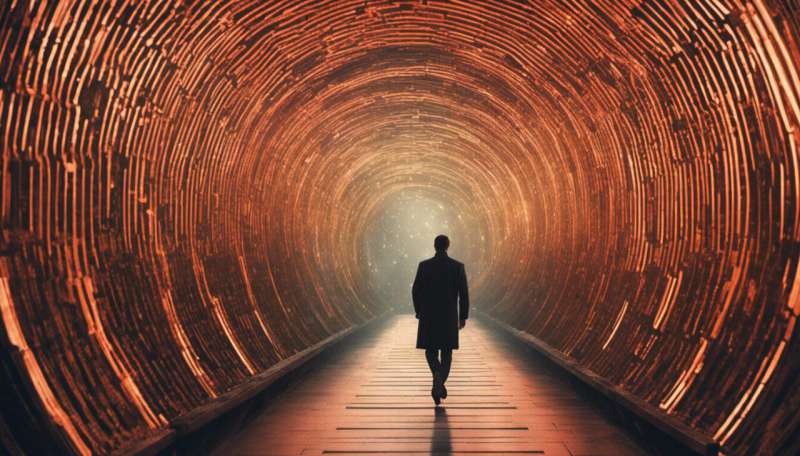Credit: AI-generated image (disclaimer)
Flinders engineering students Laith Al-Shimaysawee and Ali Al-Dabbagh have developed ground-breaking new technology for detecting human life using remote cameras.
The Iraqi students, who come from from Najaf, south of Baghdad, are studying at Flinders on Iraqi Government scholarships, and as part of their Masters thesis project have developed technology which could be used in disaster and war zones for rescue operations.
They have created a new algorithm for detecting people with thermal and colour cameras that is believed to be faster and more efficient than any other published technique.
While there are many advanced robots currently used in rescue assistance and relief, they have very limited people detection capabilities.
The new system uses a new algorithm which is more effective at detecting people, utilising both thermal and colour cameras at various resolutions. Most existing algorithms "train" their systems using the same camera they use for detection, but in this system, the training samples (images of body shapes and poses which the system uses to compare against and detect real life casualties) are independent of the camera in use, making it much more versatile.
The students' research supervisor, Dr Nasser Asgari, said that the technology can be fitted to rescue assist robots to search for trapped people in collapsed buildings or unstable structures. It could also be used with military robots to increase vision for soldiers to identify the wounded in battlefield scenarios.
Dr Asgari says the technology is versatile enough to be used to develop a helmet or hand-held device to help emergency workers find survivors faster and with less risk.
"You could put it on a robot, a hand-held device, or in a helmet be worn by rescue team workers or even rescue dogs, so that emergency workers can detect survivors faster, or to help soldiers to detect people in a battlefield," Dr Asgari said.
The number of training samples used by the new system is much smaller, which makes the system very fast in comparison with other techniques because it has less processing/comparing to do. Mr Al-Dabbagh says that some systems may use up to 1000 samples, whereas the new technique uses only eight.
It has been tested to detect people up to 50 metres using thermal cameras and up to 30 metres with colour cameras. Adding lenses to the camera can enhance the detection range.
After returning to Iraq, the students hope their work will be able to support the Iraqi army in rescue missions and other operations.
Their work will be published at an international robotics conference in Dubai next month.
Provided by Flinders University






















